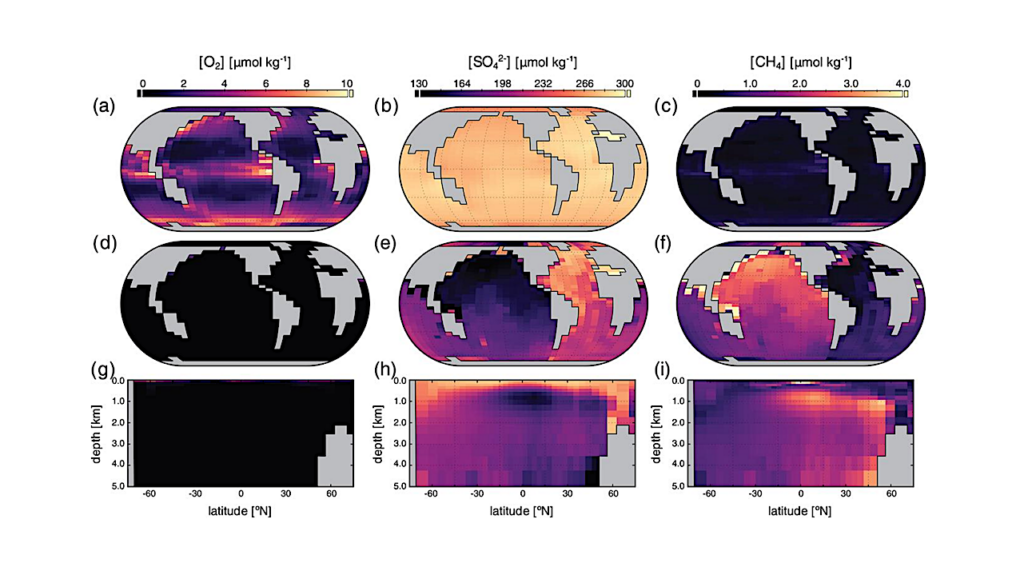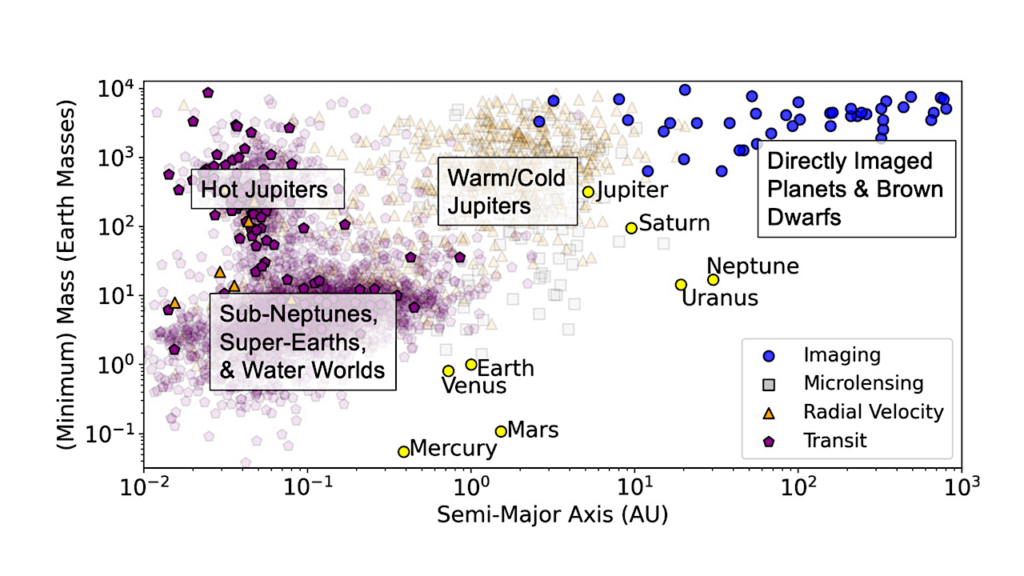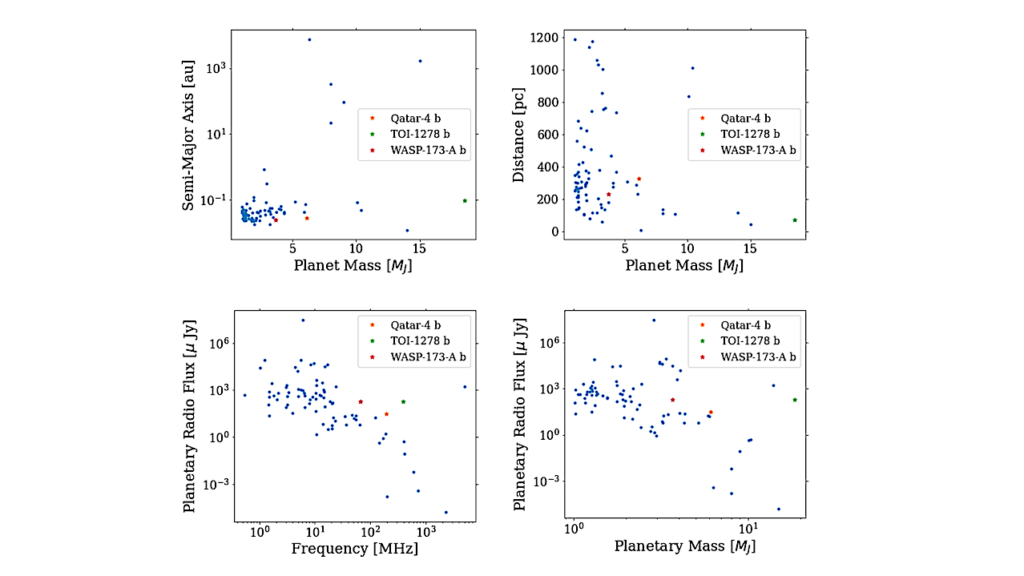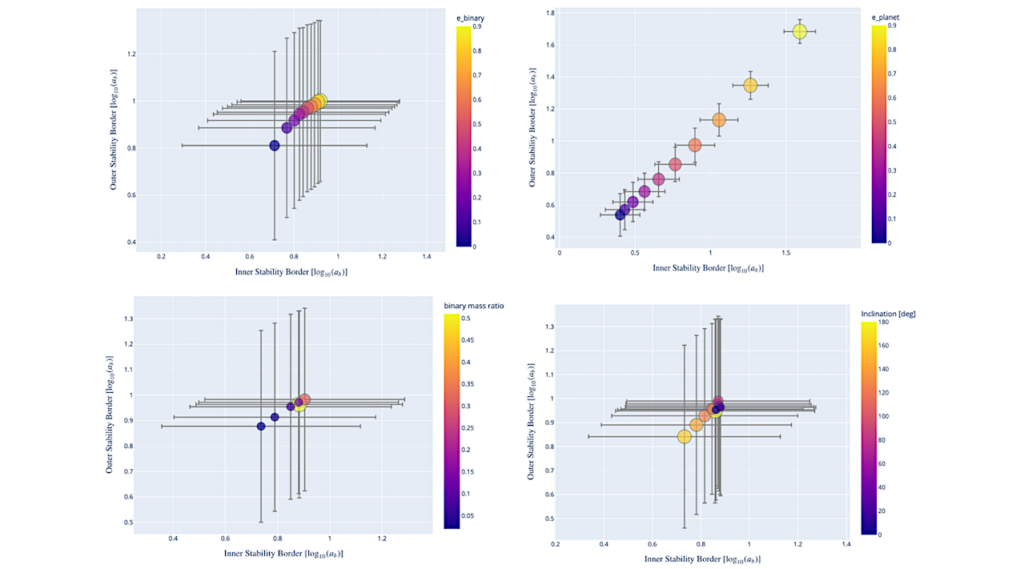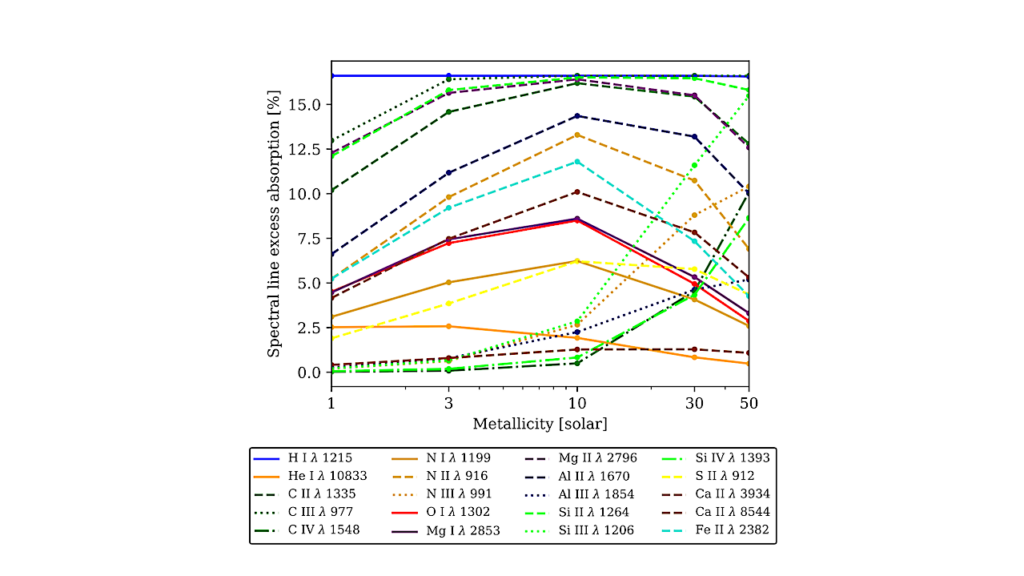Polarimetric Investigation Of Selected Cloud Compositions In Exoplanetary Atmospheres

We investigated the impact of selected cloud condensates in exoplanetary atmospheres on the polarization of scattered stellar radiation. We considered a selection of 25 cloud condensates that are expected to be present in extrasolar planetary atmospheres.
Using the three-dimensional Monte Carlo radiative transfer code POLARIS and assuming Mie scattering theory, we calculated and studied the net polarization of scattered radiation as a function of planetary phase angle at optical to near-infrared wavelengths. In addition to the well-known characteristics in the state of polarization, such as the rainbow determined by the real part of the refractive index, the behavior of the underlying imaginary part of the refractive index causes an increase or decrease in the degree of polarization and a change of sign in the polarization at a characteristic wavelength.
In contrast to Al2O3 and MgFeSiO4, clouds composed of SiO, MnS, Na2S, or ZnS produce a rapidly decreasing degree of polarization with increasing wavelength in the context of an exoplanetary atmosphere. Furthermore, the sign of the polarization changes at a wavelength of about 0.5 μm to 0.6 μm, depending on the specific cloud condensate. The resulting net polarization is mainly positive for cloud compositions with large imaginary parts of the refractive index, such as Fe, FeS, and FeO. In addition, for Fe and FeS clouds, the maximum degree of polarization at long wavelengths is shifted to larger phase angles than for FeO.
We found that most of these cloud condensates are distinguishable from each other due to their unique wavelength-dependent complex refractive index. In particular, an increase or decrease of the net polarization as a function of wavelength and a change of sign in the polarization at specific wavelengths are important features for characterizing cloud compositions in exoplanetary atmospheres.
Moritz Lietzow, Sebastian Wolf
Comments: Accepted for publication in Astronomy & Astrophysics, 12 pages, 6 figures
Subjects: Earth and Planetary Astrophysics (astro-ph.EP)
Cite as: arXiv:2205.04815 [astro-ph.EP] (or arXiv:2205.04815v1 [astro-ph.EP] for this version)
Submission history
From: Moritz Lietzow
[v1] Tue, 10 May 2022 11:32:16 UTC (3,095 KB)
https://arxiv.org/abs/2205.04815
Astrobiology



